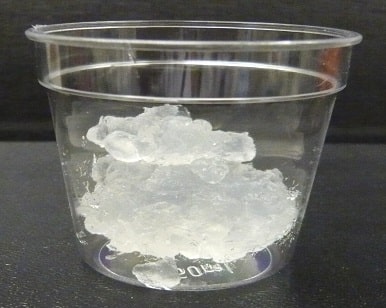Nano Cellulose: The Sustainable and Eco-Friendly Alternative
The Nano Cellulose market size was valued at US$484.411 million in 2022 and is anticipated to increase at a Compound Annual Growth Rate of 25.13% over the predictive period to reach US$2,326.308 million by 2029.
Nanocellulose, which is cellulose in the form of nanostructures, has been shown to be one of the most significant eco-friendly materials in recent history. Because of their appealing and great qualities such as abundance, high aspect ratio, improved mechanical capabilities, renewability, and biocompatibility, Nanocellulose materials are gaining increasing interest. The abundance of hydroxyl functional groups allows for a wide range of chemical functionalizations, resulting in the development of diverse materials with adjustable properties. Nano cellulose has been known to have a ton of applications in the industries such as plastics, pharmaceuticals, food and beverages, packaging, and many other sectors.
Growing Demand for Sustainable Packaging
The packaging industry has seen rapid developments in the last few years. However, with the increasing demand for online shopping and the e-commerce industry, there arises a demand for sustainable packaging methods, to tackle waste management and environmental concerns in different countries. Most packaging products are made of plastic, paper, or metal, which are neither recyclable nor biodegradable, and ultimately end up in landfills and waste grounds. This creates a major problem for environmental protection and waste management. According to a report released by UNCTAD, the online retail sales share from total sales, increased from 16%in 2019 to 19% in 2020; and the percentage was sustained throughout 2021. China accounted for more than 50% of the total online retail sales among the countries that were recorded, while the United States accounted for about 30%. Many developing countries also recorded a substantial increase in online retail sales, according to the report. With this massive increase in demand for online shopping, the packaging industry also saw a substantial increase. However, this brought forward the various issues with the usage of traditional packaging products, which led companies to search for better alternatives.
Nanocellulose is made from nano-sized cellulose fibrils derived from wood pulp. Since nano cellulose is derived from plant matter, it is bio-degradable and sustainable in nature. Nanocellulose is also lightweight and stretchable, making it a perfect material for the packaging industry. Hence, with the increasing demand for online shopping and the e-commerce industry, and the growing demand for sustainable packaging materials, the nano cellulose market is expected to rise substantially.
Increasing Oil and Gas Industry
Over the last few decades, global energy consumption has been on the rise, and it will continue to do so in the coming years. The chaos of war and climate breakdown has helped the world’s leading oil and gas companies greatly, with massive combined earnings in only the first three months of 2022. Shell has reported $9.1 billion in profit from January to March, about three times more year on year, while Exxon made $8.8 billion, nearly three times more than in 2021. Chevron’s profits grew to US$6.5 billion, while BP’s first-quarter profit was US$6.2 billion, the most in a decade.
To meet demand, the oil and gas drilling companies have been digging deeper wells with expanded reach to access deeper reserves and optimize reservoir contact. Existing hydrocarbon reserves are running out. New hydrocarbon deposits are typically discovered in difficult environments, and drilling operations in these areas are often accompanied by high pressure and high temperatures. Biopolymers including cellulose, starch, and xanthan gum are commonly used in traditional drilling fluids. However, these substances are prone to degradation when subject to extreme pressure and heat during drilling.
Nanomaterials with a well-ordered crystalline structure, such as nano cellulose, have outstanding thermal and physiochemical capabilities. These kinds of improvements are required for designing high-performance water-based drilling fluid systems. For diverse oil and gas field drilling applications, processing and chemical adjustment of crystalline nano cellulose can result in a variety of nano-based materials such as polyanionic cellulose, hydroxyethyl cellulose, carboxymethyl cellulose, and so on. Hence, with the increasing advancements and demand in the oil and gas industry, the demand for the nano cellulose market is expected to rise.
North American Region to lead the market
The North American market is expected to be the largest market for cancer profiling throughout the forecast period. The market is predicted to grow as a result of factors such as rising technological advancements and infrastructural investments. The rapidly expanding food and beverage industry, cosmetics industry, and paints and coatings industry are expected to drive up the demand for the nano cellulose market.
Nanocellulose is in significant demand in the United States for the creation of high-strength cement for building composites. According to the Associated General Contractors of America, the construction industry is a significant contribution to the US economy. The sector employs over 7.6 million people and produces approximately US$1.4 trillion in construction each year. The increasing construction industry further influences the nano cellulose market. Moreover, as people in the United States become more concerned about their health, there arises a growing need for CNF and MFC in the manufacture of functional foods, which is anticipated to influence the market positively.
Covid-19 Insight
The advent of the COVID-19 pandemic sparked a global economic downturn. Since many governments implemented lockdown measures and social distance laws, most important sectors have experienced significant losses. The nano cellulose market also faced a decline in demand, since most of the important industries were shut down.
However, the pharmaceutical industry exhibited a great demand, due to the increasing COVID-19 infection cases. Moreover, with the growing demand for the online shopping industry and food delivery industry, the packaging industry reported an increase in demand for the nano cellulose market. Moreover, as countries have started to lift their COVID-19 protocols and lockdown regulations, the nano cellulose market is expected to report an increase in demand from industries, as they restart operations. Also, with industries searching for sustainable and environment-friendly alternatives to traditional materials, the nano cellulose market is expected to rise substantially in recent years.



